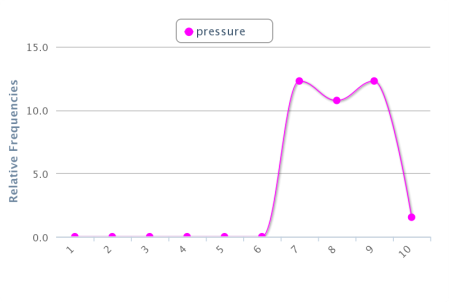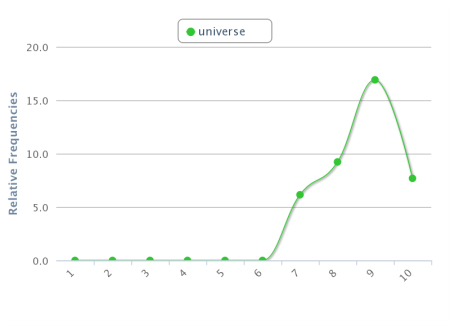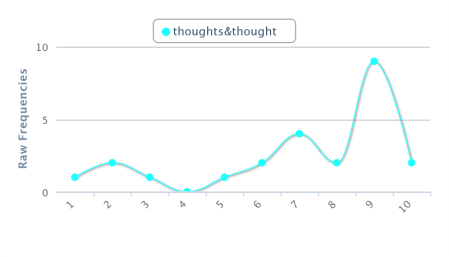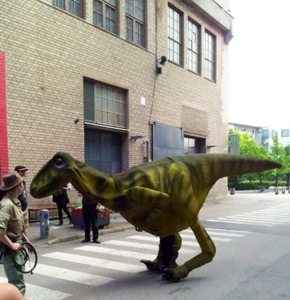International Conference on the Fantastic in the Arts
The 37th ICFA (my 19th!) is coming up and it is time to start thinking about paper proposals.
Conference Date: 16-20 March, 2016
Location: Orlando, Florida
Deadline for proposals: 31 October, 2015
Please join us for ICFA 37, March 16-20, 2016, when our theme will be “Wonder Tales.” Folklorists often use this term to refer to the stories commonly known as “fairy tales” due to the genre’s emphasis on the marvelous and its invocation of wonder, but what is wonder and where can it be found? Many events, characters, or objects generate a response of wonder—transformations and resurrections— but wonder also may be generated in technological advances and from the “sense of wonder” in science fiction. Papers might explore wonder tales and their modern incarnations, readers’ responses of wonder to fantastic texts, uses of wonder within fantastic texts, how wonder is invoked across mediums and genres, and the relationship between wondering (marveling) and wondering (questioning).We welcome papers on the work of our guests:
- Guest of Honor Terri Windling (author and editor, winner of nine World Fantasy Awards, the Mythopoeic Fantasy Award, the Bram Stoker Award, and the Solstice Award)
- Guest of Honor Holly Black (author of The Spiderwick Chronicles, and winner of the Mythopoeic Fantasy Award in Children’s Literature and a Newberry Honor book for Doll Bones)
- Guest Scholar Cristina Bacchilega (author of Postmodern Fairy Tales: Gender and Narrative Strategies and Fairy Tales Transformed: 21st-Century Adaptations and the Politics of Wonder).
We also welcome proposals for individual papers and for academic sessions and panels on any aspect of the fantastic in any media. The deadline for proposals is October 31, 2015. We encourage work from institutionally affiliated scholars, independent scholars, international scholars who work in languages other than English, and graduate students.
International Conference on Fictional Maps
Here’s a call for papers for a conference that those of you who know me can understand makes me very happy. (Oh, and I have been asked to deliver a keynote lecture, which also makes me happy.)
Conference Date: 21 – 23 January, 2016
Location: Katowice, Poland
Deadline for proposals: 30 October, 2015
Mapping the imaginary has always been a challenge for world-building and storytelling alike. Map of the fictional world subverts the very essence of an actual cartography: it represents a territory that cannot be discovered or traversed in a non-fictional realm and yet it delivers much more than a usual map: a promise of the journey into unknown. An exquisitely quotable phrase by J. R. R. Tolkien, who claimed to have “started with a map and [then] made the story fit”, is only reprising what have always been evident to cartographers and creators of imaginary worlds: maps precede territories and are inevitably becoming the most essential part of modern and postmodern storyworlds. Ambrosius Holbein’s wood-cut in the first edition of Thomas More’s Utopia, collectors editions map in video games, atlases of fictional universes, animated map routes in online reportages, or even interactive maps outlining the worlds of blockbuster TV shows — these are all indications of a significant shift in contemporary storytelling that looks for creating many and more access points to the fictional storyworld. Hence conference attendees will be asked to submit abstracts of presentations or poster descriptions revolving around:
- fictional topography and geopotics
- map theory & theorists
- the dichotomy of a map and a territory
- ways of mapping the imaginary
- fictional cartography (maps, atlases, mini-maps, plans, charts, etc.)
- maps of secondary, imaginary, fictional, possible or impossible worlds
- relationship between world-building and map-making
- function of maps: between navigating and augmenting the world
- navigating the actual and the imaginary: Tim Ingold’s trail-following and wayfaring
- case studies in literature
- case studies in video games
- case studies in movies and TV shows
- case studies in comic books, graphic novels and other media
- case studies in transmedia storytelling and transmedial franchises
- case studies in fictional worlds
Apologies
Fafnir Roars Again
OK, folks, many of you may not be familiar with Fafnir, which is something as wonderful as a Nordic scholarly journal on the Fantastic. I know the editors well and they are great people (and yours truly is on the Advisory Board), whom you can trust with an article, conference report, or review. So go on, take a look at the CfP below.
CALL FOR PAPERS FAFNIR 3/2014
Fafnir – Nordic Journal of Science Fiction and Fantasy Research invites authors to submit papers for the upcoming edition 3/2014.
Fafnir – Nordic Journal of Science Fiction and Fantasy Research is a new, peer-reviewed academic journal which is published in electronic format four times a year. The purpose of Fafnir is to join up the Nordic field of science fiction and fantasy research and to provide a forum for discussion on current issues on the field. Fafnir is published by FINFAR Society (Suomen science fiction- ja fantasiatutkimuksen seura ry).
Now Fafnir invites authors to submit papers for its edition 3/2014. Fafnir publishes various texts ranging from peer-reviewed research articles to short overviews and book reviews in the field of science fiction and fantasy research.
The submissions must be original work, and written in English (or in Finnish or in Scandinavian languages). Manuscripts of research articles should be between 20,000 and 40,000 characters in length. The journal uses the most recent edition of the MLA Style Manual. The manuscripts of research articles will be peer-reviewed. Please note that as Fafnir is designed to be of interest to readers with varying backgrounds, essays and other texts should be as accessibly written as possible. Also, if English is not your first language, please have your article reviewed or edited by an English language editor.
The deadline for submissions is 15 June 2014.
In addition to research articles, Fafnir constantly welcomes text proposals such as essays, interviews, overviews and book reviews on any subject suited for the journal.
Please send your electronic submission (saved as RTF-file) to the following address: submissions(at)finfar.org. For further information, please contact the editors: jyrki.korpua(at)oulu.fi, hanna.roine(at)uta.fi and paivi.vaatanen(at)helsinki.fi.
This edition is scheduled for September 2014. The deadline for the submissions for the next edition is scheduled at 31 August (4/2014).
Best regards,
Jyrki Korpua, Hanna-Riikka Roine and Päivi Väätänen
Editors, Fafnir – Nordic Journal of Science Fiction and Fantasy Research
Finalist for the Locus Awards!

I’m incredibly honoured to find that my book, Here Be Dragons, made the finalists for the Locus Awards in the category Best Non-Fiction. When I begun writing my dissertation, I never suspected that it would end up there. Truth be told, I never would have suspected it once I was done, either.
On the Locus Index to SF Awards, you can find this to read about the award:
The Locus Awards are presented to winners of Locus Magazine‘s annual readers’ poll, which was established in the early ’70s specifically to provide recommendations and suggestions to Hugo Awards voters. Over the decades the Locus Awards have often drawn more voters than the Hugos and Nebulas combined. In recent years Locus Awards are presented at an annual banquet, and unlike any other award, explicitly honor publishers of winning works with certificates.
You can find the complete list of finalists at the Locus Magazine website. As you can see, I’m in very distinguished company!
At the same time, I found out that my book is also on Locus’s Recommended-Reading List for 2013, which is almost as humbling. At the same time, I realised that I must have been working far too much this past year or so, to have missed all this. (The reason I’m so late with this post, however, is a flu-turned-sinusitis that has pretty much kept me under its thumb for weeks now.)
The Fantastic Digital
This autumn has been highly demanding in terms of work, hence the absence of blog posts. These past two days offered a welcome reprieve, in a way. I have attended a great course in digital humanities with Susan Schreibman of Trinity College Dublin and Jenny Bergenmar of Gothenburg University. Although two days are too short a time to do more than offer an introduction to the discipline (or is it a sub-discipline?), that introduction was very inspirational.
As some of you may know, I’m a great fan of close-readings. The closer, the better, in fact. But I also see the value of quantitative research. Nor am I a stranger to discussing the traits of an entire genre – the fantasy genre, to be practise. Over the past two days, I have come to realise how what could conceivably be termed ‘distance reading’ can bridge these three approaches. Using text analysis tools to look for patterns and clusters, it is possible to explore texts – in particular large texts or many texts – and find new ways into them. Even in cases when the text is fairly short, some patterns can surprise.
I explored Ted Chiang‘s wonderful short story ‘Exhalation’ with some of the tools. In my opinion, this story captures the very essence of science fiction, as it illustrates how the scientific process and scientific inquiry leads to a greater understanding of the world. It features a scientist for its protagonist and entropy as its central scientific concept. When I used Wordle to see which words figured prominently in the story, I ended up with this (click to watch at the Wordle website):
In this ‘word cloud’, the only relevant variable is the relative size of the words. Colour and position have only aesthetic value. Even so, a few words stand out in this cloud. It is obvious that this is a story about air, pressure, the universe, and thoughts, for instance. Given the title of the story and what I just told you about it, this is not surprising. What possibly surprised me was how clear the connection was between the story and its most prominent words. And I was intruiged by what I found when I used another tool, Voyant Tools , to dig a little deeper. The four graphs below show where in the text the prominent words appear (I have left out ‘one’, which should probably have been excluded as a ‘stop-word’, words that are very common but tell us litte about the content of a text):




What strikes me in all these graphs are how late in the story the bulk of the prominent words show up. ‘Pressure’ and ‘universe’ enter the text some 60% of the way into the story (the X-axis are tenths of the total word count, each tenth corresponding to about 650 words). ‘Air’ is more wideley dispersed, but there is a clear hump around 60-70%. ‘Thought/s’ is even more spread out, but still have a clear accumulation towards the end. To the extent that these words capture a central theme in Chiang’s story – and I believe they do – they also show how that theme only really gets going well into the second half of the story.
So what? Well, I don’t really know, yet. But now I can return to the text and try to find out. What does it mean to the plot that the most prominent words only really show up in the latter half? I can guess, but I had never thought about it. (And I have linked to the story, so feel free to find out for yourselves.)
These digital tools seem to offer new ways into texts that I thought I new, and my next step will probably be to apply some of them on my urban fantasy project. But more about that at a later date.
On the usefulness of reviews …
This is not really about fantasy or sf but about the nature of scholarship and the life as a scholar, so feel free to stop reading if you like.
My book Here Be Dragons has been out for about six months now, and reviews have started to appear. Some have been good (Thank you!), some have been annoying (It is a book of literary scholarship!), some have been indifferent, and, occasionally, some have raised interesting points (The settings of H. P. Lovecraft deserve a study of their own!). In a way, it is very much like a drawn out work-in-progress seminar, except no one tears your work apart at quite such fundamental level. Even a bad, annoying review cannot compare to the experience of having several really smart people inform you of every problem your text has, page by page. That pretty much inoculates you against disappointing reviews down the road.
But I thought I’d share one review with you, not because it is glowingly positive – it isn’t, not really – but because it drew my attention to something that I needed to have pointed out to me. Something I once was completely aware of but had forgotten. Jonathan Crowe, in a review of my map chapter, returned to the fact that what I have written is not the final word on fantasy maps but the first. And although I believe that the first words on this subject have been said (well, written) long before by other scholars, I agree: there is a long way yet to go, a lot more to do. And reading Crowe’s saying this, I suddenly remembered how much I wanted to go on looking at fantasy maps when I wrote the final sentences of my chapter. I have taken a slight look at fantasy city maps in a conference paper since then, but that’s about it.
And thanks to Crowe, I have come to realise how I can combine more map work with my current project about urban fantasy. In a way, the map and the city seem incompatible in fantasy, and yet, there are some maps that deal with urban environments. Time, thus, to drag maps into my thoughts about cities. Thank you, Jonathan!
Ett perspektivskifte värt att vänta på
Recension av Anna Blixts Fredens pris. Första boken om Mörkrets Väktare.
 Första gången som jag blev varse styrkan i att se en berättelse från två håll var i antologin Tales of the Witch World (1987). De två novellerna ”Of the Shaping of Ulm’s Heir” by Andre Norton och ”Heir Apparent” by Robert Bloch skildrar samma händelseförlopp, men den ena berättelsens protagonist är den andras antagonist och vise verse. Med perspektivskiftet bytte ont och gott plats och blev relativa. Fram till dess hade jag bara mött fantasygenrens tämligen absoluta godhet och ondska, och alternativet var riktigt uppiggande.
Första gången som jag blev varse styrkan i att se en berättelse från två håll var i antologin Tales of the Witch World (1987). De två novellerna ”Of the Shaping of Ulm’s Heir” by Andre Norton och ”Heir Apparent” by Robert Bloch skildrar samma händelseförlopp, men den ena berättelsens protagonist är den andras antagonist och vise verse. Med perspektivskiftet bytte ont och gott plats och blev relativa. Fram till dess hade jag bara mött fantasygenrens tämligen absoluta godhet och ondska, och alternativet var riktigt uppiggande.
Sedan dess har jag hittat ett antal texter som vågat göra något annorlunda med den binära oppositionen godhet—ondska, ofta genom att introducera gråskalor, ibland genom att vända på perspektiv. Anna Blixt gör bådadera i Fredens pris, och hon gör det bra. Faktum är att jag läste den här boken redan långt innan den kom ut på Undrentide Förlag; manuset hamnade på mitt bord när jag jobbade som lektör för ett annat förlag redan för tio år sedan. Då var min inledande sammanfattning:
En mycket positiv överraskning! Höll mig vaken sent på nätterna. En något oslipad diamant med drag av Robin Hobb och Patricia McKillip.. Ett årtionde och tveklöst en hel del omskrivningar senare har språket och berättelsen slipats en hel del.
I bokens värld tillhör människor antingen Mörkret eller Ljuset. De ser i det närmaste likadana ut men de förra förtrycks, trots eller på grund av sina magiska förmågor, av de senare. Jag uppskattade att det fick röra sig om rätt vardagligt förtryck till en början, av den där sorten som vi människor sysslar med lite till vardags när vi upptäcker en lite annorlunda minoritet i vår mitt. Oavsett alla slag och magiska strider som sedan följde kunde jag tänka tillbaka på den grundläggande främlingsfientlighet och rasism som Blixt låter utgöra grunden för konfrontationen mellan de två folken. För konfrontation blir det förstås.
Huvudpersonen Minora är nästan genomgående berättare från sin barndom och genom en mycket stormig uppväxt där hon hamnar mitt i motsättningarna och konflikterna mellan Ljuset och Mörkret. På nära håll får vi följa Mörkrets kamp för att kasta av sig förtryckets ok – och genom Minoras ögon får vi sedan se vad det innebär att frigöra sig med våld. Och där mycket fantasy fortfarande skulle ha gjort valen enkla ifrågasätter Blixt hela tiden det moraliska i sina huvudpersoners handlande.
Många ingredienser är vanligt fantasygods: en mäktig ledare med magiska förmågor, en ung huvudperson som upptäcker sina egna krafter, en konflikt mellan Ljust och Mörkt, en okänd ras med dunkla avsikter … Men bokens styrka ligger i hur dessa manipuleras så att de faktiskt ekar av vår egen värld utan att förenkla den. I centrum står problemen med att söka frihet med vapen i hand, men också värdet och faran av kärlek.
Blixt överraskar kanske inte så mycket med historien, men hon gör det med utförandet. Jag läste denna version med samma stora nöje som jag läste manuset för alla dessa år sedan. Visst finns det svagheter här och där i språket, och kanske fungerar det inte så bra att plötsligt överge Minoras röst för ett kapitel här och där, men det kan jag förlåta. Värre är antagligen omslaget; den kraftigt svart-röda designen och valet av typsnitt samverkade så illa att jag lyckades gå förbi boken flera gånger utan att se den. Ett perceptionsfilter som omedvetet stoppade boken i ett mentalt spam-filter, helt utan hänsyn till alla de detaljer ur berättelsen som designern lyckats få in. Men jag ska inte gnälla över detta – alla lider säkert inte av samma problem som jag på det här området. Och det gladde det att se att bok två, Rämnfödd, kom ut i våras. Den kommer utan tvekan att hamna i läshögen.
Mina slutord får bli desamma som när jag först kommenterade berättelsen: ”Jag kan utan förbehåll rekommendera den här boken till både nya och luttrade fantasyläsare.”
Finalists for the 2013 SF & F Translation Awards
The Association for the Recognition of Excellence in SF & F Translation (ARESFFT) is delighted to announce the finalists for the 2013 Science Fiction and Fantasy Translation Awards (for works published in 2012). There are two categories: Long Form and Short Form.
Long Form
- Atlas: The Archaeology of an Imaginary City by Kai-cheung Dung, translated from the Chinese by Anders Hansson, Bonnie S. McDougall, and the author (Columbia University Press).
- Belka, Why Don’t You Bark? by Hideo Furukawa, translated from the Japanese by Michael Emmerich (Haikasoru).
- Kaytek the Wizard by Janusz Korczak, translated from the Polish by Antonia Lloyd-Jones (Penlight).
- Roadside Picnic by Arkady and Boris Strugatsky, translated from the Russian by Olena Bormashenko (Chicago Review Press).
- Seven Terrors by Selvedin Avdić, translated from the Bosnian by Coral Petkovich (Istros Books).
- Three Science Fiction Novellas by J.-H. Rosny aîné, translated from the French by Danièle Chatelain & George Slusser (Wesleyan University Press).
- The Whispering Muse by Sjón, translated from the Icelandic by Victoria Cribb (Telegram).
Note: The version of Roadside Picnic in question is a brand new translation of this well-loved work, and therefore eligible for the award despite the existence of a previous English language version.
Short Form
- “Augusta Prime” by Karin Tidbeck translated from the Swedish by the author (Jagannath: Stories, Cheeky Frawg).
- “Autogenic Dreaming: Interview with the Columns of Cloud” by Tobi Hirokata, translated from the Japanese by Jim Hubbert (The Future Is Japanese, Nick Mamatas and Masumi Washington (eds.), Haikasoru).
- “Every Time We Say Goodbye” by Zoran Vlahović, translated from the Croatian by Tatjana Jambrišak, Goran Konvićni, and the author (Kontakt: An Anthology of Croatian SF, Darko Macan and Tatjana Jambrišak (eds.), SFera).
- “The Flower of Shazui” by Chen Qiufan, translated from the Chinese by Ken Liu (Interzone #243).
- “A Hundred Ghosts Parade Tonight” by Xia Jia, translated from the Chinese by Ken Liu (Clarkesworld #65).
- “A Single Year” by Csilla Kleinheincz, translated from the Hungarian by the author (The Apex Book of World SF #2, Lavie Tidhar (ed.), Apex Book Company).
The nominees were announced at Finncon 2013 in Helsinki, over the weekend of July 6-7 during a discussion about international science fiction. ARESFFT Board member Cheryl Morgan and jury member Stefan Ekman, who was a Guest of Honor at Finncon, were present, as was Short Form nominee, Karin Tidbeck. Other countries represented at Finncon this year include Latvia, Estonia, Russia, China, France, Canada, the UK, and the USA.
The winning works will be announced in August. Each winning author and translator will receive a cash prize of US$350.
ARESFFT President Professor Gary K. Wolfe said: “The number of fine works that our jury has to consider is increasing each year. We are delighted to be able to bring such fine fiction from a wide range of different cultures to the attention of the English-speaking world.”
The money for the prize fund was obtained primarily through a generous donation by Society for the Furtherance & Study of Fantasy & Science Fiction (SF3). SF3 is the parent non-profit corporation of Wiscon, the feminist science fiction convention.
The jury for the awards was James & Kathryn Morrow (Chairs); Felice Beneduce, Alexis Brooks de Vita, Stefan Ekman, Martha Hubbard, Ekaterina Sedia, Kari Sperring, and Aishwarya Subramanian.
Fantastic Time at Finfar and Finncon 2013
First an apology: this spring turned out rather more hectic than expected, so I have let the blog slip somewhat. For that, I’m sorry! I’ll try to make amends.
Now the main topic of this blog. For the past few days, I have been the guest scholar of Finfar and Finncon in Helsinki. It has been a fabulous experience!
For two days, I attended the Finfar seminar, where young scholars discussed their submitted work with each other and with senior researchers in the field. The texts spanned the entire width and length of fantastic scholarship, ranging from studies of Donald Duck to William Gibson, of fantasy names to fanfic, of Tolkienian evil to vampire boyfriends and much more. And I can safely say that Finnish research into the fantastic is in very good shape indeed, leagues ahead of Sweden.
 The con itself was also superb. All program items that I attended, in the audience or as participant, were well organized. I could invariably leave them feeling enlightened, entertained, or both. (Entertainment was also provided by all the wonderful people in wonderful costumes that floated around in the halls. Although the dwarf party that won the masquerade were great, my personal favourite is still the dinosaur that made an appearance during yesterday morning.)
The con itself was also superb. All program items that I attended, in the audience or as participant, were well organized. I could invariably leave them feeling enlightened, entertained, or both. (Entertainment was also provided by all the wonderful people in wonderful costumes that floated around in the halls. Although the dwarf party that won the masquerade were great, my personal favourite is still the dinosaur that made an appearance during yesterday morning.)
The most moment for me was when I found myself filked at by the Filk Freaks from Tampere, however. Drawing on some ideas about urban fantasy that I had presented in the program booklet, they had written lyrics to go with an ABBA song. As I think it is brilliant (and as it is the first time someone has turned my fantasy thoughts into song), I reproduce it below, with permission.
Opposing Forces
(Lyrics by Marianna Leikomaa. Music: Mamma Mia!)
I’ve read fantasy books since I don’t know when
Getting into their worlds time and time again
Sometimes it feels they’re not credible
All these ordeals, but the world itself makes no sense
It is all just a big pretense.
Give me realistic worlds with two sides
Not just good or bad but let me decide, w-o-o-o-oh
Opposing forces, urban fantasies
My my, how can I resist you?
Opposing forces, in best fantasies
My my, just how much I miss you!
Yes, I’ve read crappy fiction
Where there is no conviction
Why, why are there no more things unseen?
Opposing forces, in best fantasies,
Oh oh, help me shape realities.
(All rights are probably reserved by the author.)

